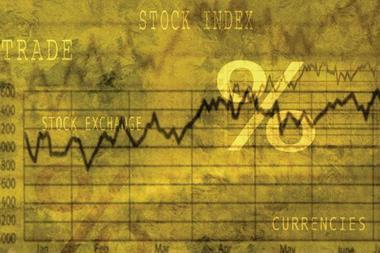David Abrahams considers the ways and means of introducing risk thinking to marketing colleagues in difficult times
Marketing is relaunching itself. This is not to suggest that anyone doubts the increasing importance of brands. Quite the reverse. Even so, the elders of the profession have noticed a steady decline in the influence of the marketing generalist, persistent misconceptions about the marketing remit and a lingering public mistrust. Fewer marketers make it to the board than they should, a place where accountability and an understanding of risk go hand in hand. The Chartered Institute of Marketing and The Marketing Society have each counselled their memberships to raise their game, collectively and individually. To compound the performance challenges already familiar to the present generation of senior marketers, they are now facing an economic downturn of uncertain depth and duration. Perhaps there has never been a better time to suggest the value of risk literacy to marketing colleagues. [See box: ‘What is risk literacy?’.]
Assuming that there is no disagreement about the benefits of risk literacy in principle, the question is how to propose systematic risk thinking to marketers in practice. To answer it, we need to be reasonably clear about what marketing is, what risk means to marketers and what marketers might find useful at this time.
What marketing is
Marketing is more than advertising and sales promotion. Whether the responsibility is given to one or more functions in the firm, marketing is fundamentally concerned with the interpretation, facilitation and management of profitable customer-led demand (or its equivalents in not-for-profit organisations). A complete marketing plan therefore needs to consider up to seven components of the so-called ‘marketing mix’ (see Figure 1: ‘The 7Ps of marketing’). The assumptions in a marketing plan are reflected in the target profit and loss statement for the business or branded product line.
No marketer has sole accountability for strategy, tactics and delivery in every area with impact on the brand. However, they may be required to brief and coordinate across other functions and agencies, so that the plan they present is appropriate, coherent and feasible. Marketers hold different responsibilities in different industries and organisations. The senior brand manager in a consumer goods company may be required to lead the entire strategic and tactical development process for a portfolio of products. In other cases, the marketers focus exclusively on development and execution of the communications plan or stakeholder relations.
What risk means to marketers
It would be wrong to suggest that marketers do not consider risk and uncertainty at all. Like anybody else, they try to make good decisions and effective plans. In the absence of coaching and encouragement to do otherwise, marketers tend to apply more method to their identification of opportunity than to the management of risk. One reason for this is that the culture of marketing is a culture of advocacy. Marketers rightly believe (and are sometimes reminded!) that their job is to propose courses of action, not courses of inaction, with a show of confidence and conviction.
This is not to imply that every marketer is an out-and-out risk seeker who will always set over-optimistic objectives. However, it does mean that the absence or extent of due diligence may not be evident in a marketing plan. There may be concern that an over-zealous presentation of risks will condemn the project. Conversely, fear of failure or disapproval may lead marketers to put forward plans so conservative, that the important risks to a brand’s performance in the long term may be ignored or untreated in the short term. Absence of risk assessment method also makes it harder for marketers to apply risk thinking efficiently to their many routine decisions about brand activities and budgets.
Marketers are licensed, supervised risk takers on behalf of their firms. They frequently need to make qualitative and quantitative judgements about uncertain competitive or marketplace issues. Refinements of pricing policy may have an enormous impact on financial performance, but their effects are notoriously difficult to simulate. Product and service innovation is inherently risky, but marketers are called upon to predict or shape demand. Market research may be unreliable or unavailable. In not-for-profit organisations, this would involve calling the odds in the race for resources.
If companies are competing for market share in categories which are not growing, marketers have to make effective and efficient promotional investments in a zero-sum game. Unfortunately, short-term financial pressures frequently result in the marketing budget being the first in line for cuts, sometimes without reduction in the associated target. It is reasonable to conclude that some marketing decisions might be clearer (perhaps different) when discussed in the language of risk.
What marketers need
It may not have occurred to many marketers that they are professional risk takers, yet it is true. Marketers have a vested interest in learning how to take risk with some technical understanding and a degree of self-awareness. The requirement for risk literacy holds true whether individuals are naturally risk-seeking or risk-averse. There is nothing here to suggest that risk taking is wrong: it is unavoidably what marketers do.
The need goes beyond conventional risk mapping and the associated risk management plan, even though these are helpful in prioritising attention to the big issues. In addition to the narrative risk assessment techniques, such as scenario planning, a marketer’s education in risk literacy should include an appreciation of risk attitude, knowledge of decision-making pitfalls (heuristics), understanding of the basic rules of probability, and sufficient familiarity with the benefits of risk modelling technique to take advantage of the assistance available from other functions in or outside the firm.
At the present time of economic uncertainty, marketers will inevitably be obliged to focus on short-term performance. They will once more face the prospect of substantial reduction in budgeted resources. In such circumstances, marketers ought, in principle, to place value on risk-related tools and techniques that will:
(1) help them to reassess and, if necessary, defend - their assumptions about the determinants of success for key projects
(2) help them to make a financial business case for investment in market research, and
(3) help them to make credible and transparent risk-adjusted forecasts of sales, profit or return on investment. [See box: ‘Brand risk thinking in tough times’.]
None of the three techniques suggested here is new: dependency modelling; expected value of information; Monte Carlo simulation. Each is an established decision-making methodology. It is simply that most marketers appear not to have heard of them. The reasons to introduce them now may be compelling. Most marketing teams will certainly require coaching to use the tools well and wisely, especially at the outset.
According to their responsibilities and experience, some individuals will inevitably be more comfortable with the practice of marketing as an art rather than as a science. On-going practical support is most likely to come from specialists, particularly from colleagues in financial planning and market research departments, who are already working with the marketing teams. Their understanding and commitment is therefore important. In some cases, these colleagues will also need to be introduced to the tools for the first time, albeit with a more technical and hands-on role in mind.
Overcoming the uneasiness
The essential case for risk thinking in marketing is that it can improve decision making, speed up cross-functional consensus and lend credibility to marketers and their plans. The prospect is appealing to senior marketers. That said, it is hard to deny that risk mapping exercises in isolation adopt a negative view: that is their purpose. The focus on the downside is not disturbing if you are a technical expert in risk matters, an insurance professional or an internal auditor. It is less appealing as an on-going mental model for marketers.
An alternative perspective on risk thinking for marketing people is to describe its benefit as setting out a route to realism. Realism is a characteristic of business maturity. Realism does not prevent risk taking: a marketing team can choose to take a legitimate, proportionate and manageable risk, fully aware that the actual chances of success are low. Realistic people are simply prepared for departures from the plan. Similarly, a systematic reality check will help a team to understand what needs to go right in order for a project to meet its objective.
Figure 2 shows how one might add ‘3Rs of realism’ to the 7Ps of marketing which we identified earlier. Marketers should be reassured that these processes are not designed to frustrate creativity, but to support it. Risk assessment helps to define the parameters for a creative exercise (‘these are the issues to resolve’) or sheds light on how an idea might need to be improved.
Many marketers will be intrigued to learn about risk attitude and the workings of their own minds under uncertainty. If nothing else, it is knowledge which may be transferable into their analysis of customer behaviour. It is harder to establish a new discipline of operational due diligence. In order to specify the real value of risk thinking beyond the theory, it may be helpful to hold an initial dialogue with senior marketing colleagues about moments of truth in the marketing year when performance is reviewed, goals are agreed or resources approved. Their memory of past events will highlight areas where decisions may have gone against them, or where, as decision-makers themselves, they wished for a more realistic assessment of risk and opportunity from their own team. On this particular point, it is worth recalling that some less experienced marketers may be unduly conservative and risk-averse.
The wider view
Successful introduction of risk thinking in the marketing function does not just require its acceptance and implementation by marketers. Managements must also do more than sponsor. They should reward the transparency and realism which risk thinking is designed to bring about.
What is risk literacy?
'Risk literacy' is not about reading (or writing) books on risk. Risk |literacy in business is concerned with the adequacy of a manager's 'underpinning knowledge' about concepts of risk and uncertainty, familiarity with suitable risk assessment approaches and an ability to deal appropriately with the risk issues identified.
Brand risk literacy applies this underpinning knowledge to
marketing problems and to other brand-related issues that are faced by marketers and non-marketers alike. It sits alongside strategic insight and financial understanding as the third required competence for people who manage brands.
We suggest that risk literacy benefits marketers in three ways:
1. A currency of communication. The recognised techniques of risk assessment amount to a currency of cross-functional communication within organisations. They offer an additional means by which marketers can present analysis of marketing matters to non-specialist colleagues, take best advantage of the corporate risk-management frameworks already in place and support the company's external reporting.
2. Value contribution. There is evidence that the perceived value and resulting influence of a function within an organisation are generally proportionate to its effectiveness in dealing with critical uncertainties. A risk-literate interpretation of brand opportunities and issues does not only demonstrate a proper due diligence in the development of marketing plans. It also helps to reveal the extent to which the marketing function is, in effect, 'absorbing uncertainty'.
3. Performance management. Above all else, risk literacy helps marketers to become better qualified as 'professional risk-takers' more fully equipped to address the inevitable risks and uncertainties that arise in pursuit of brand performance.
Extracted from Abrahams, D.J. (2008), Brand Risk: Adding Risk Literacy to Brand Management, Gower Publishing
Postscript
David Abrahams is director of Brand Mediation and the author of Brand Risk: Adding Risk Literacy to Brand Management, Gower Publishing (2008), email: david.abrahams @brandmediation.com


















No comments yet